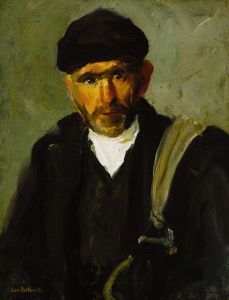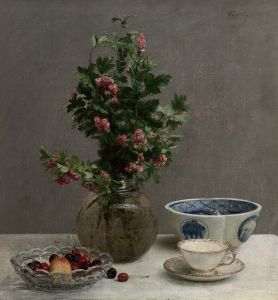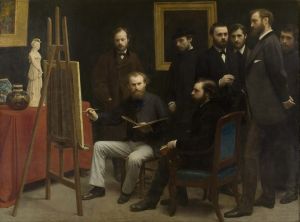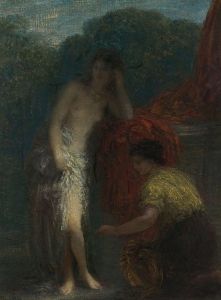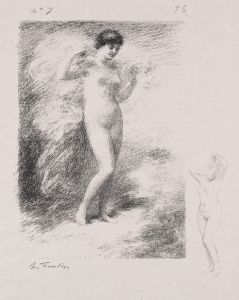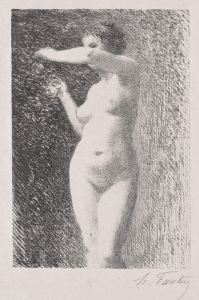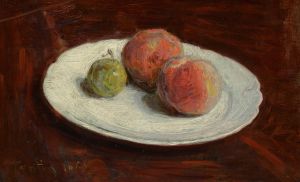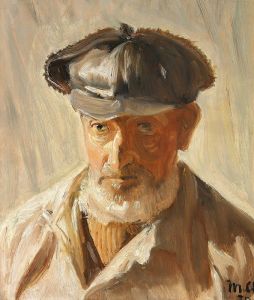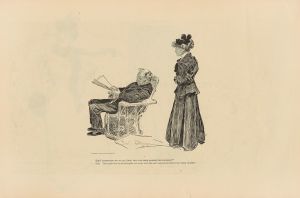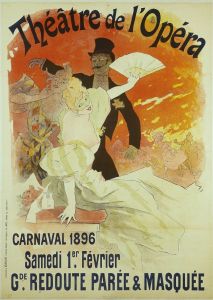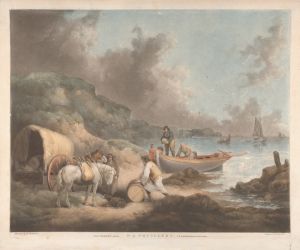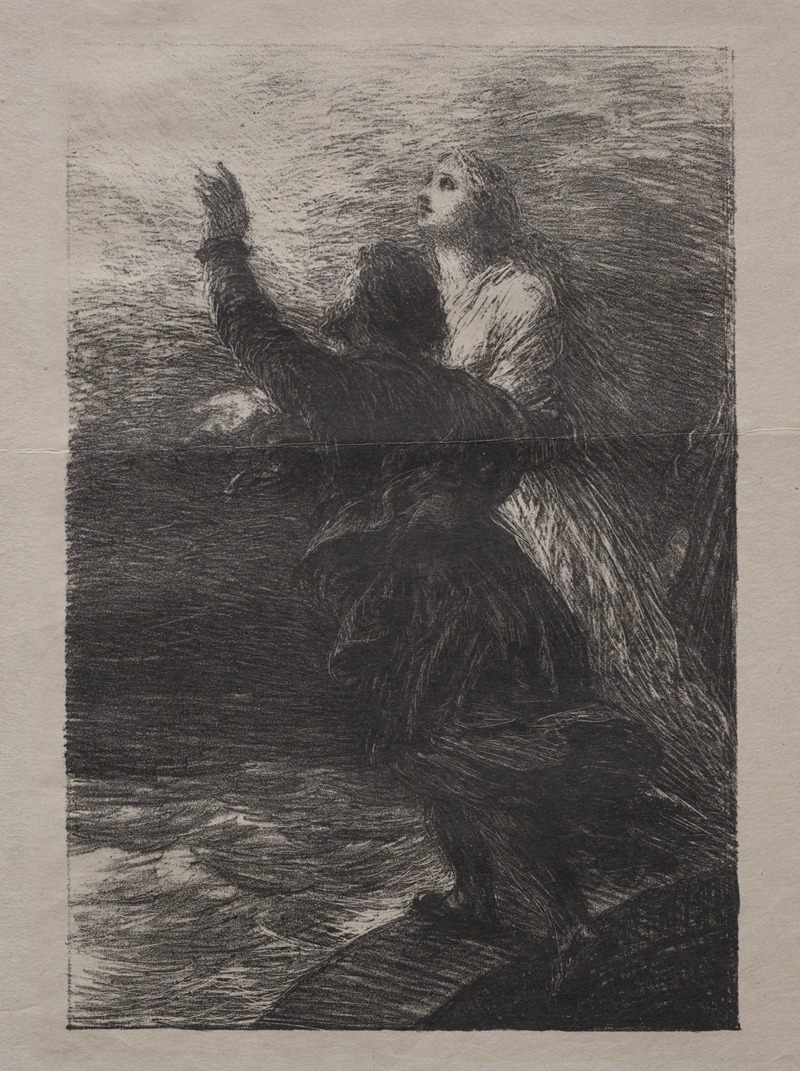
The Flying Dutchman; Act III, The Ecstasy of Senta and the Dutchman
A hand-painted replica of Henri Fantin-Latour’s masterpiece The Flying Dutchman; Act III, The Ecstasy of Senta and the Dutchman, meticulously crafted by professional artists to capture the true essence of the original. Each piece is created with museum-quality canvas and rare mineral pigments, carefully painted by experienced artists with delicate brushstrokes and rich, layered colors to perfectly recreate the texture of the original artwork. Unlike machine-printed reproductions, this hand-painted version brings the painting to life, infused with the artist’s emotions and skill in every stroke. Whether for personal collection or home decoration, it instantly elevates the artistic atmosphere of any space.
Henri Fantin-Latour, a renowned French painter known for his still lifes and group portraits, created a notable work titled "The Flying Dutchman; Act III, The Ecstasy of Senta and the Dutchman." This painting is inspired by Richard Wagner's opera "The Flying Dutchman" (Der fliegende Holländer), which premiered in 1843. Wagner's opera is a romantic and dramatic tale that revolves around the legend of the Flying Dutchman, a ghostly ship doomed to sail the seas forever, and Senta, a young woman who becomes obsessed with the Dutchman's story.
Fantin-Latour's painting captures a pivotal moment from Act III of the opera, where Senta and the Dutchman experience a moment of intense emotional connection. The scene is characterized by its dramatic and romantic elements, reflecting the themes of redemption and eternal love that are central to Wagner's work. Fantin-Latour, known for his ability to convey emotion and atmosphere, uses his skills to bring this operatic moment to life on canvas.
The composition of the painting is carefully crafted to highlight the emotional intensity of the scene. Fantin-Latour employs a rich palette and dynamic lighting to emphasize the drama of the moment. The figures of Senta and the Dutchman are depicted with a sense of movement and passion, capturing the ecstasy and turmoil of their encounter. The artist's attention to detail and his ability to convey the psychological depth of his subjects are evident in this work.
Fantin-Latour was part of a circle of artists and musicians who were deeply influenced by Wagner's music and ideas. His admiration for Wagner is reflected in several of his works, where he explores themes from the composer's operas. "The Flying Dutchman; Act III, The Ecstasy of Senta and the Dutchman" is one such example, showcasing Fantin-Latour's ability to translate musical drama into visual art.
This painting is part of a broader tradition of 19th-century artists who were inspired by Wagner's operas. Wagner's influence extended beyond music, impacting literature, philosophy, and the visual arts. Artists like Fantin-Latour found in Wagner's operas a rich source of inspiration, allowing them to explore complex themes and emotions through their art.
Fantin-Latour's work is characterized by its meticulous technique and its ability to capture the essence of his subjects. In "The Flying Dutchman; Act III, The Ecstasy of Senta and the Dutchman," he successfully conveys the operatic drama and emotional depth of Wagner's story. This painting stands as a testament to Fantin-Latour's skill as an artist and his deep appreciation for the music and themes of Richard Wagner.
Overall, "The Flying Dutchman; Act III, The Ecstasy of Senta and the Dutchman" is a significant work in Fantin-Latour's oeuvre, reflecting his engagement with Wagnerian themes and his ability to translate musical and dramatic narratives into the visual language of painting.





